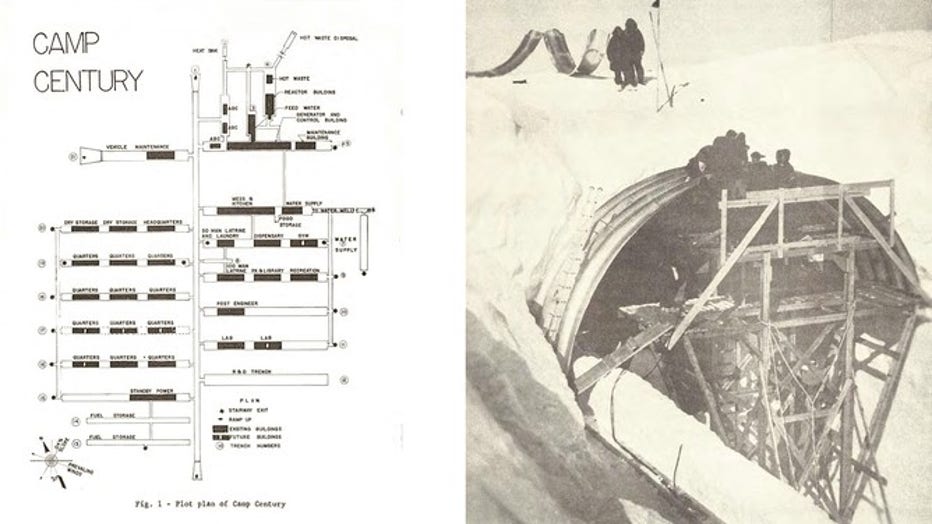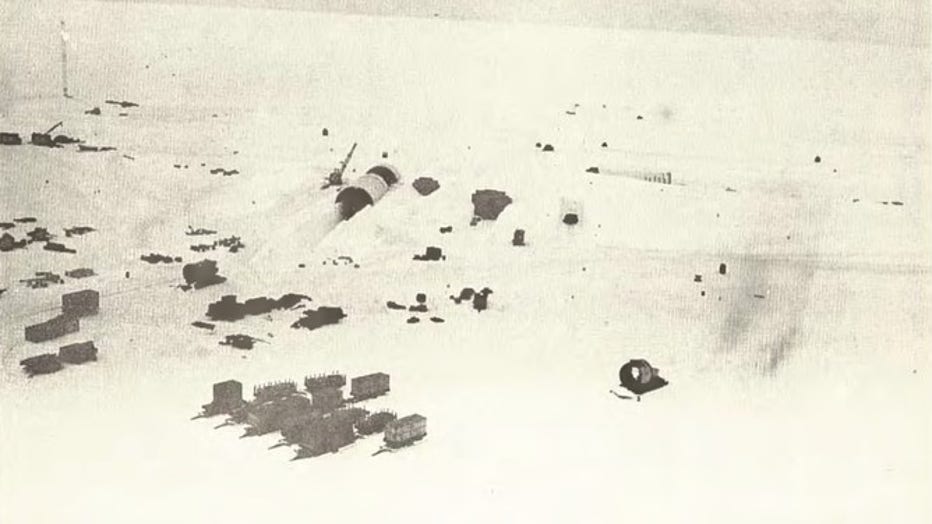NASA radar accidentally finds secret Cold War 'city under the ice' in Greenland
Trump wants war in Gaza over before he takes office
President-elect Donald Trump would like to see a cease-fire deal in Gaza that results in Hamas-held hostages being freed before he takes office, Sen. Lindsey Graham (R-SC) told Axios in an interview. LiveNOW's Austin Westfall discussed that report and other top headlines from the Middle East with retired Marines intelligence officer Hal Kempfer.
As a NASA science flight was flying over the Greenland ice sheet this spring, a surprise popped up on a specialty radar: a hidden Cold War city more than 100 feet beneath the ice.
In April 2024, a team of engineers and scientists were flying on NASA’s Gulfstream III, testing NASA’s UAVSAR (Uninhabited Aerial Vehicle Synthetic Aperture Radar) mounted to the belly of the aircraft.

A photo of the Greenland Ice Sheet and a NASA’s UAVSAR image of Camp Century. (NASA)
Unlike standard radar, which produces 2D images of the ice sheet, UAVSAR produces more dimensional mapping, which is why the image that came back showing the U.S. Cold War relic known as Camp Century was so visible.
The map above from UAVSAR shows a clear layout of Camp Century compared to the 2D image below.

A 2D radar profile of the Greenland Ice Sheet where Camp Century can be seen below the ice. (NASA)
"We were looking for the bed of the ice and out pops Camp Century," said Alex Gardner, a cryospheric scientist at NASA’s Jet Propulsion Laboratory. "We didn’t know what it was at first."
Camp Century was a U.S. military base constructed in 1959 within the Greenland ice sheet with a network of tunnels and infrastructure. According to NASA, it is known as the "city under the ice."
The top-secret location doubled as a testing site for potentially deploying nuclear missiles from the Arctic during the Cold War, according to the Cooperative Institute for Research in Environmental Sciences (CIRES) at the University of Colorado Boulder.

On left, a map of Camp Century. On right, a photo of construction of a 100 foot arch erection extension to the main plant tunnel taken at Camp Century in May 1960.
Construction was a major challenge for engineers and crews in Greenland. According to the U.S. Army Corps of Engineers post-build report, temperatures ranged from 10 degrees to 20 below zero during the construction. Limited daylight and blowing snow were also challenges.
When the base was abandoned in 1967, years of ice and snow buried the nuclear-powered base more than 115 feet below.
Once believed to be entombed in the ice forever, a 2016 CIRES-led study found a changing climate means Camp Century can no longer be considered "preserved for eternity." CIRES researchers found that melting and thinning the ice sheet could expose any remaining biological, chemical and radioactive waste from Camp Century.

A July 1960 aerial view over Camp Century showing open ends of power plant tunnels and an incompleted arch over a reactor tunnel, and PM-2A equipment on sleds as delivered to Century. (U.S. )
The CIRES-led study used ground-penetrating radar to estimate the amount of waste under the ice. The team found that the waste at Camp Century covers about 136 acres, about the size of 100 football fields, and contains an estimated 53,000 gallons of diesel fuel and 63,000 gallons of wastewater.
NASA said scientists continue to use conventional radar to corroborate estimates of Camp Century’s depth to estimate when the melting and thinning of the ice sheet could unearth the Cold War relic.
The accidental observation by NASA's UAVSAR could help in future mapping of Greenland's ice sheet and when Camp Century's waste could become a problem.
LINK: Get updates on this story and more at foxweather.com.

